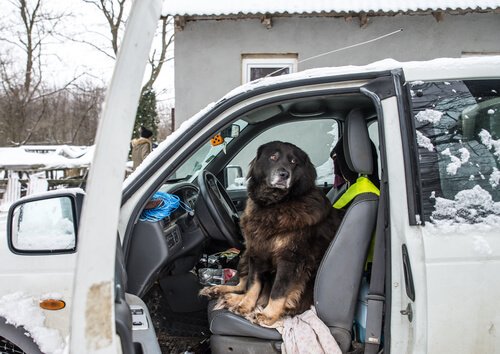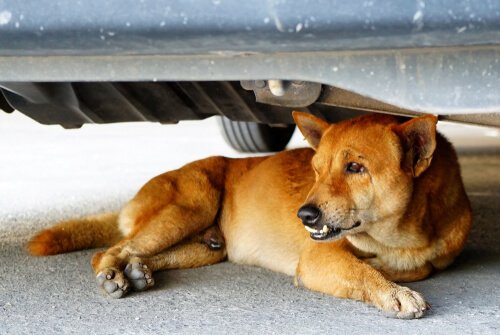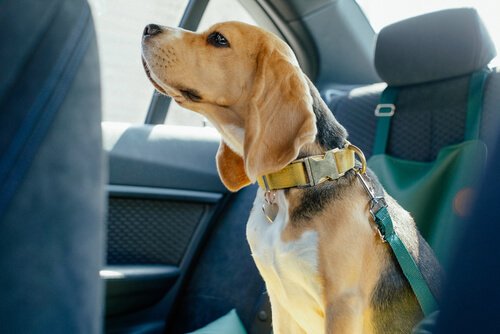What To Do If Your Dog Is Scared of Cars

Lots of dogs have a fear of cars, whether it being on road trips, or just the sound cars make as they pass by on the road. This behavior tends to be associated with post-traumatic stress, but not always. However, it can be addressed. Read the advice on this article to know what to do if your dog is scared of cars.
Steps to Follow if Your Dog is Scared of Cars
Stay calm
If you already know that your dog is scared of cars, and you also get nervous each time one passes by, then this will only make things worse for your dog. You should talk to him with a gentle voice whilst walking calmly. Smile and show him that you’re calm and safe in order for them to be calm as well.
Don’t Pet Him
If your dog is anxious, don’t pet him. Petting them is a reward and this is how they will see it. If you pet your dog, they’ll believe that their behavior is they are doing nothing wrong and this will only reinforce their reaction each time you find yourself in this situation.
Don’t scold them
Fear is something that every animal and human feels. If you scold your dog, they’ll feel worse, and become even more scared. What’s even worse is that they could start to associate you with the same bad feelings that come from the sounds cars make. This will only make your dog even more anxious and nervous around you. Your dog should always feel safe are you and not threatened.
Don’t force them
They say that the best way to overcome your fears is to face them. However, this doesn’t work for all people and neither does it work with animals. Don’t even think that by forcing your dog to face his fears will help them, it will just make things worse.

Make car sounds more common
If you live in the city, it’s possible that you live on a busy street with lots of cars. Make the sounds part of the background noise by leaving the windows open. Don’t open all windows at once. Try to keep one window open all week. Then open a different window until they’re gradually all open.
Through this process, you’ll be able to observe how your dog reacts, and see if they get used to the noise or if it intensifies their fear. If you’re going to open a new window and he’s not ready, then wait a little longer.
Take him somewhere where there are cars
When you do this, make sure that the cars are cars far away. Go to a park or a street near a busy road where you can see and hear cars from a distance. However, don’t stay for a long time if you notice that your dog is getting anxious. Just half a minute two or three times a week will be an excellent form of therapy.
If you see that he’s getting less scared, you can stay for a longer period of time each day.
Establish a command
Try to get your dog to obey or understand a command when you are close to traffic. By getting them to focus and concentrate on you, they will forget that there are cars around and this will help them overcome their fear.
Fear of traveling in a car
If your dog has a fear of traveling in a car, make sure their harness is fastened comfortable and not too tight. Also, if you seat them in a carrier, make sure it’s the right size.

Open the windows so that your dog doesn’t get dizzy and so the carrier as a flow of fresh air. However, don’t use an air freshener in the car because they emit strong odors that could make them sick.
If your dog is anxious and nervous, don’t force them into the car. It’s much better to first try to calm them down and train them to get in and out of the car with the car parked, by using treats. This way, they will start to relate the car to something positive.
So, don’t worry. You can deal with any fear or trauma that your dog may have if you learn to understand the signs and show plenty of affection. It’s just the same if your dog is scared of cars. It requires effort, but it’s definitely worth it.